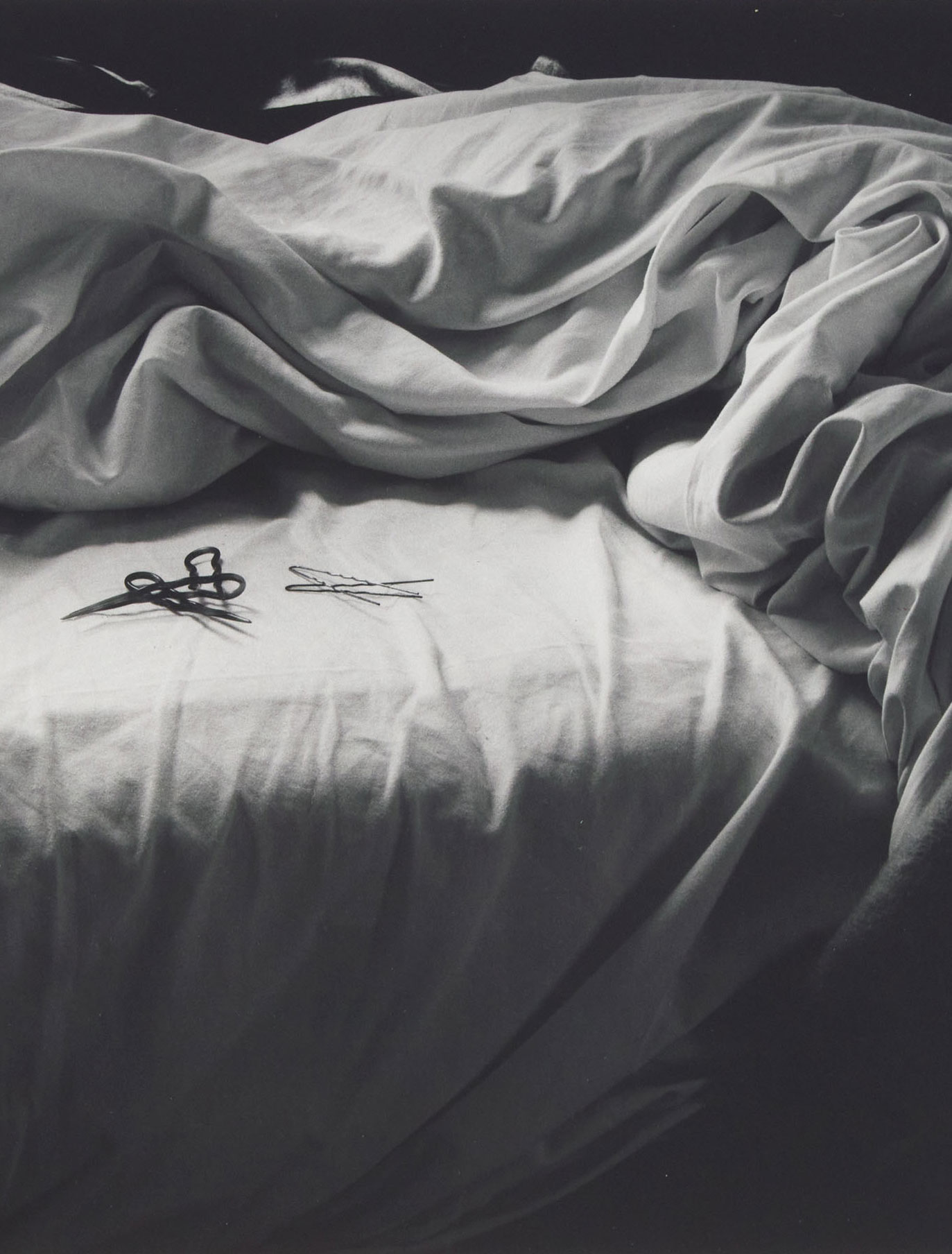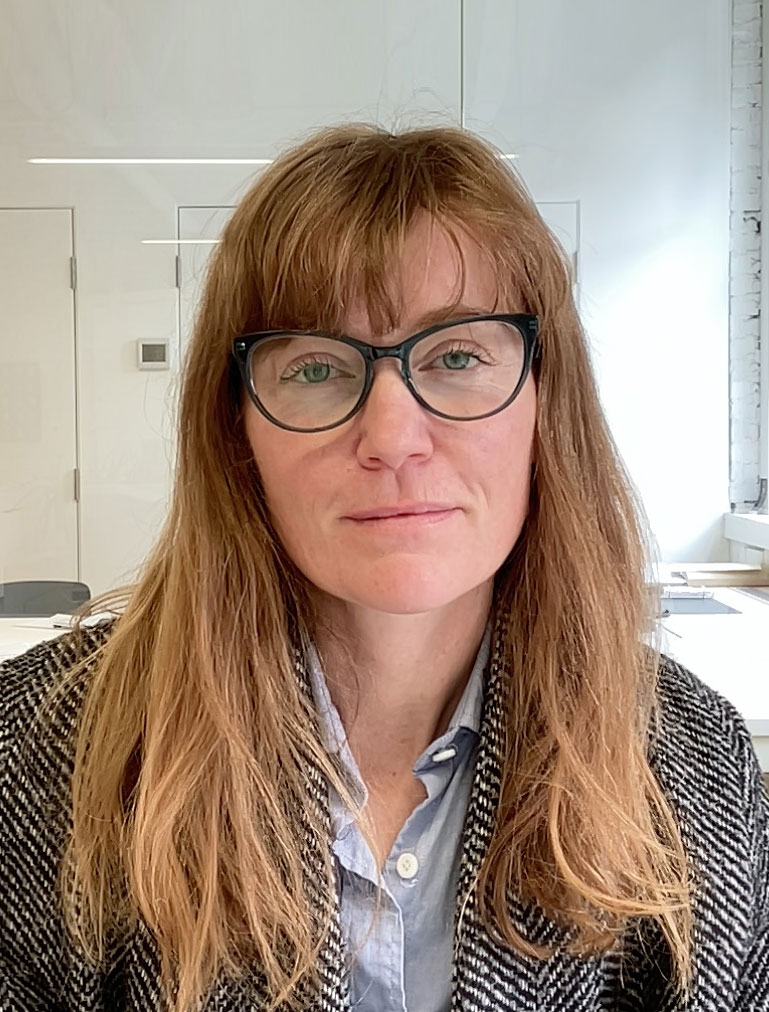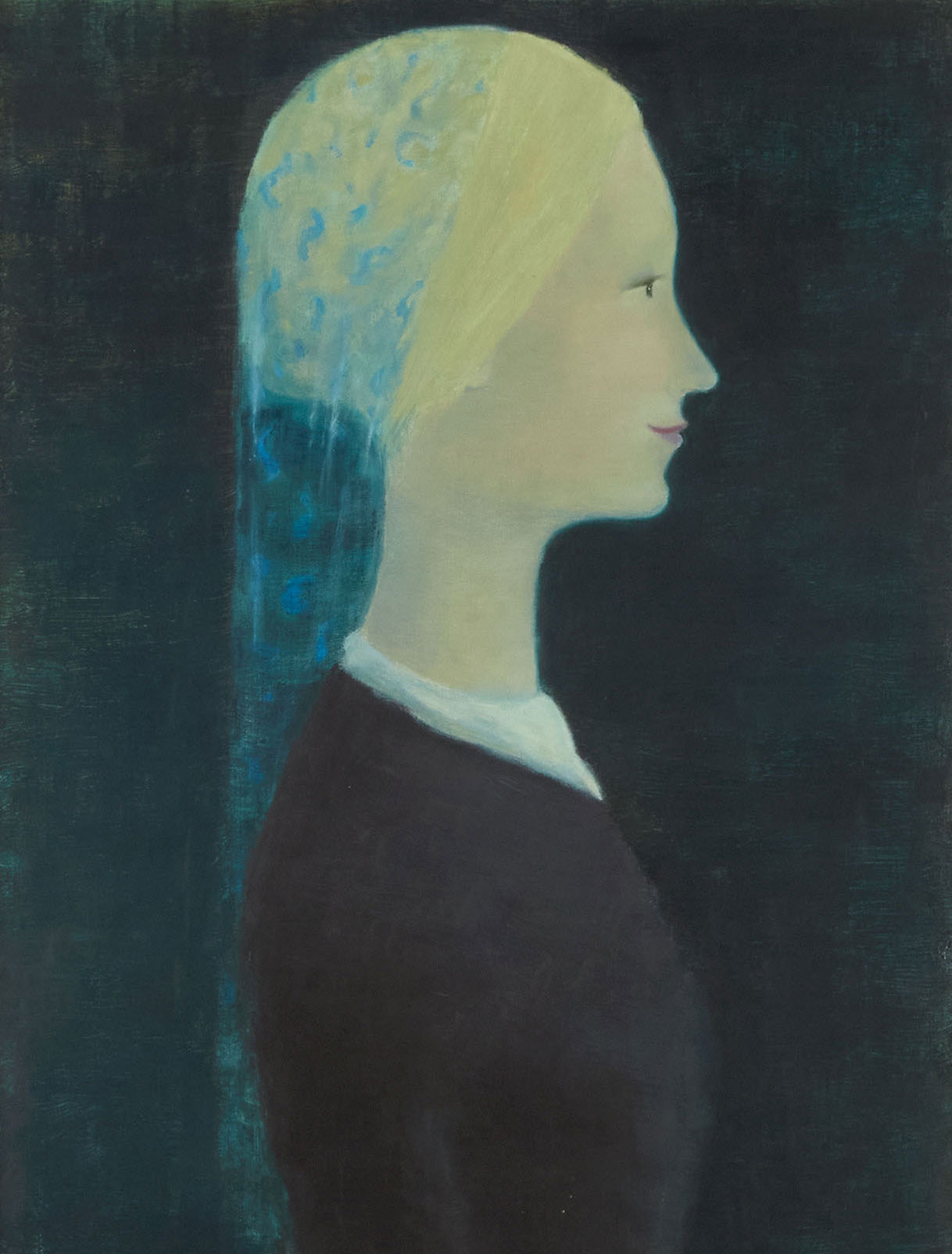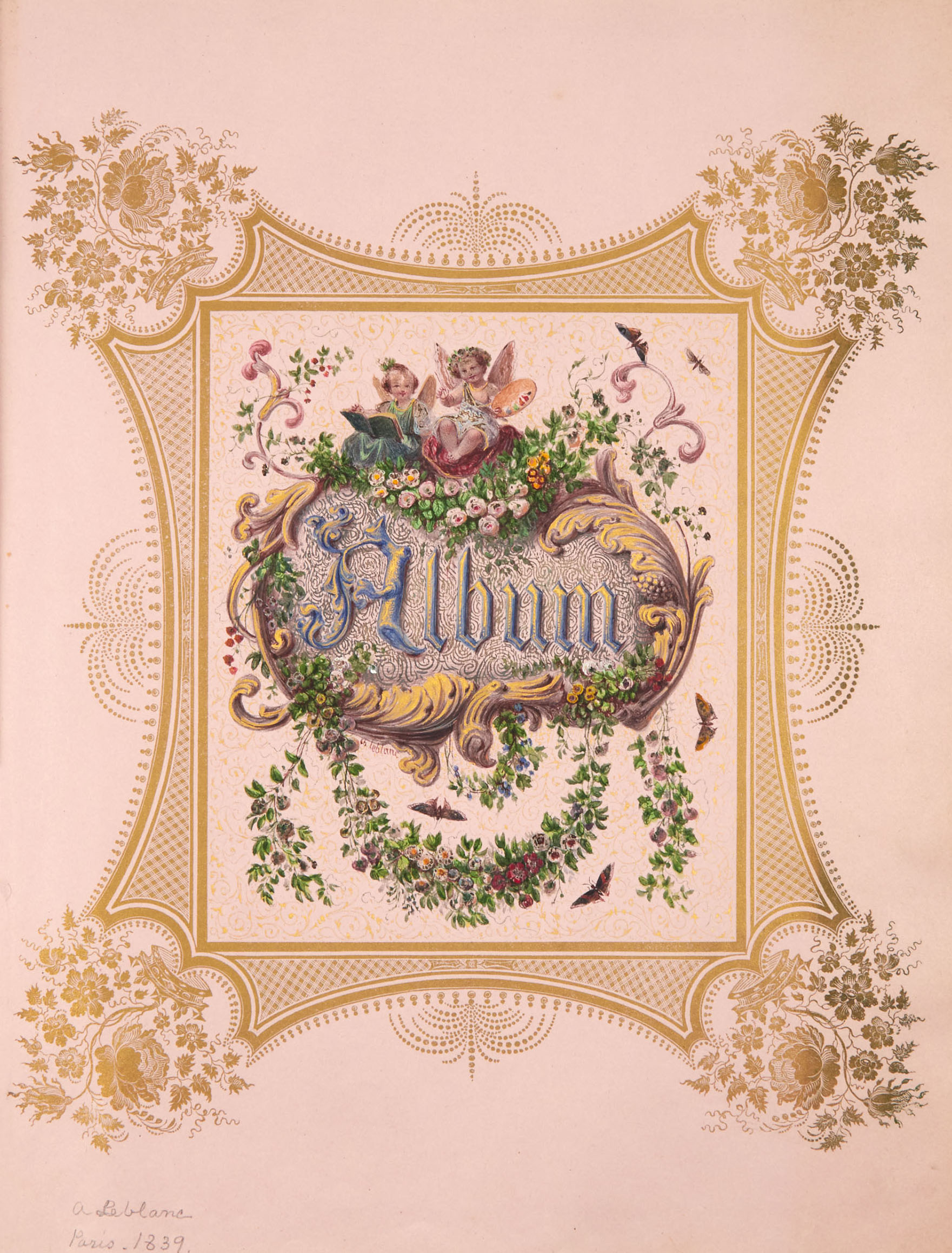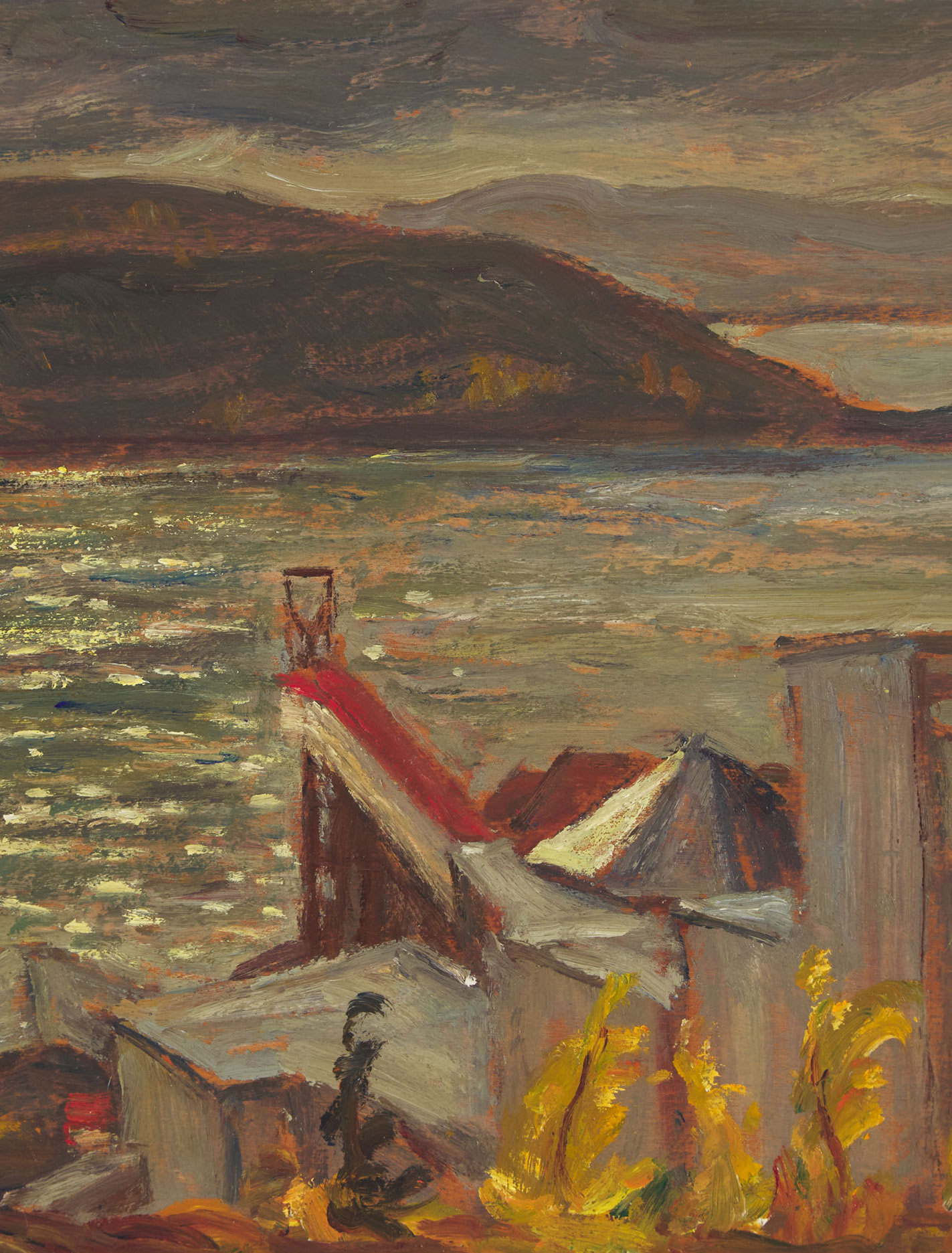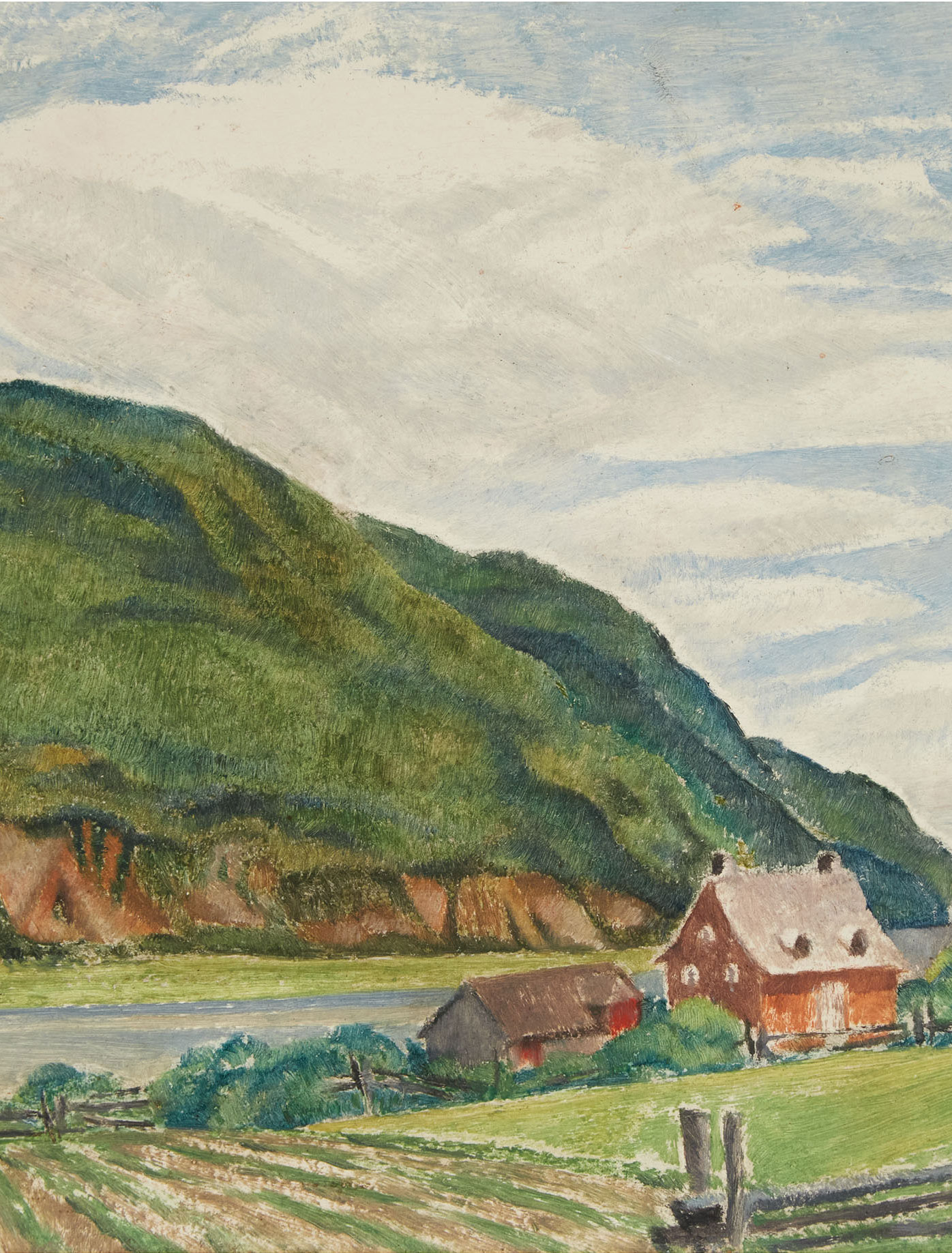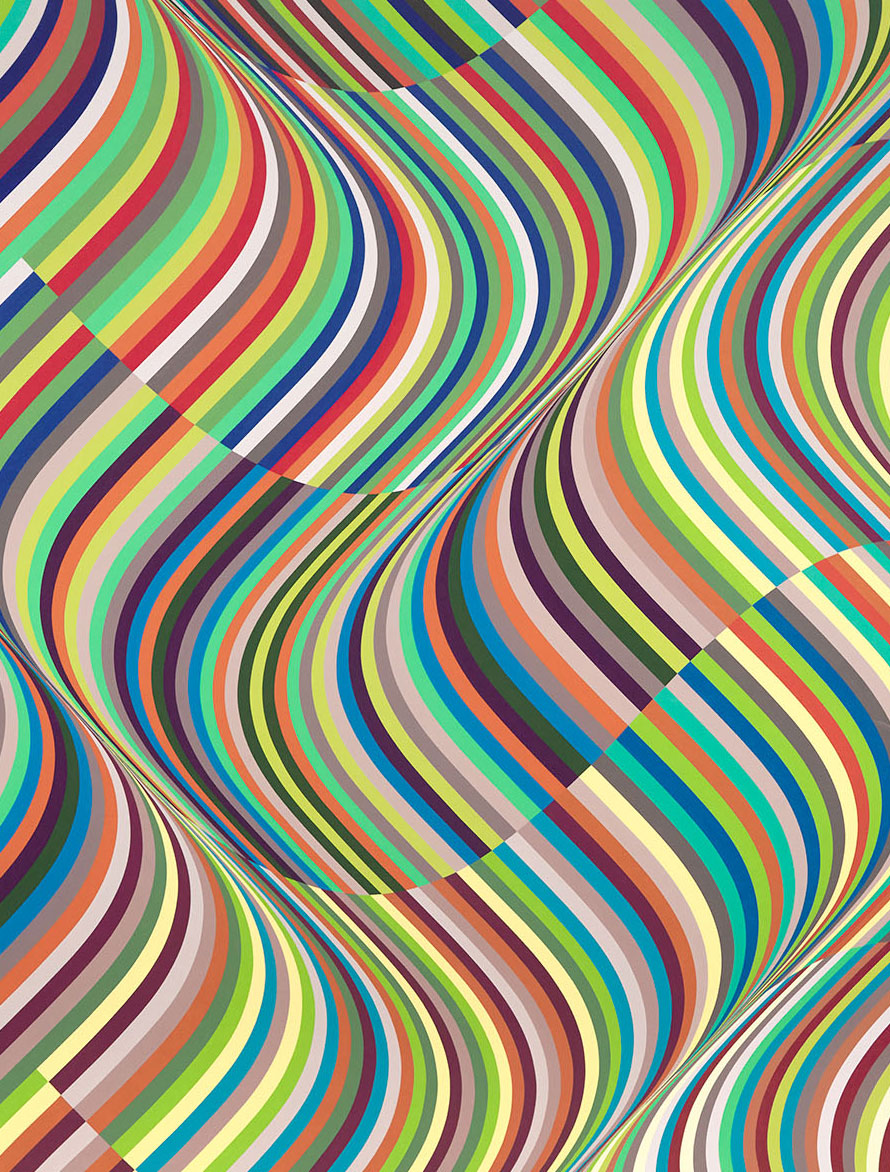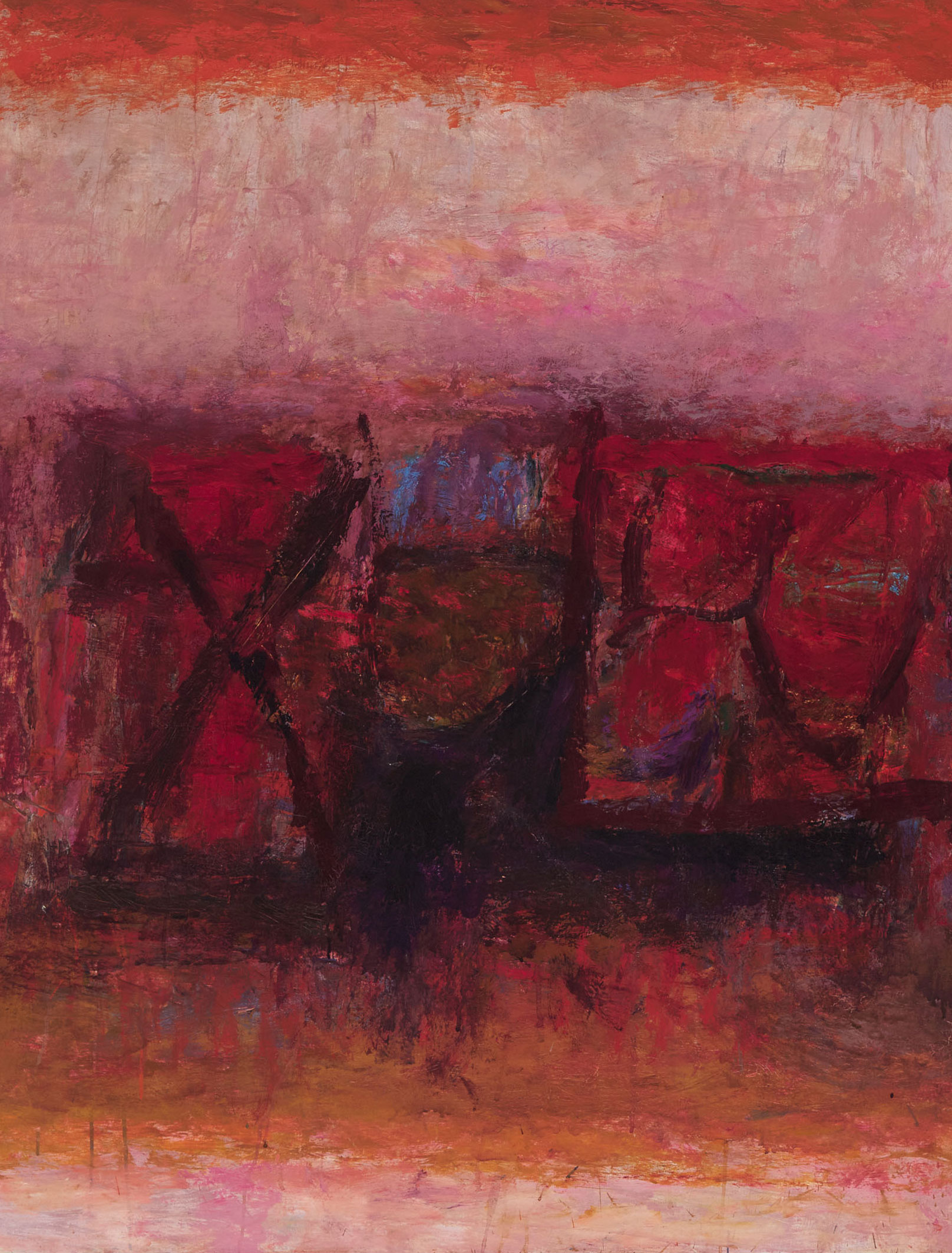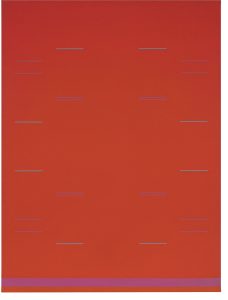
Bonne fête, Raga earned a colour reproduction in Time magazine when it was first shown in Yves Gaucher’s 1967 solo exhibition at Galerie Agnès Lefort in Montreal. The Time review was titled Towards Serenity.[1] When the art critic Carol Zemel, writing for Artscanada, visited the show, someone, surely the artist himself, submitted her to a little lightshow. First she looked at the paintings under the normal gallery lighting. Then the lights were lowered, and, as she discovered, now when each painting was differently lit, not only did it look different, but in its new state it totally held its own, in Zemel’s judgement, as “a complete statement.”[2]
With Bonne fête, Raga we can ourselves repeat the exercise. Observe first its dominant cadmium red ground, which spreads upwards and outwards with no upper or lateral restraints. Thin horizontal blue and purple stripes, or signals, as Gaucher called them, play jauntily across it, dispersed in a symmetrical oval formation above a thicker purple baseline. But it is the ground plane, more than ever before in Gaucher’s work, that sets the mood. And celebratory it is, as appropriate, as per its title, for a birthday greeting. The paint is perfectly smooth and edges are crisp and clean.
Then we dim the lights and the red plane ever so gently dematerializes, transforming itself from matter into light. The signals hover and seem to glow from within. It is like being transported from the outward world into an inner otherworld. As Gaucher wanted to demonstrate to Zemel, “I am not painting pictures; I am painting states of mind.” He wanted his paintings understood not as pictures of something, but as objects in their own right, plotted out so as to enrapture the viewer’s inner self.
This was no doubt also true of his earlier hardedge and optically active paintings from before the 1967 Agnès Lefort exhibition. But the Ragas, like Bonne fête, Raga, were an inflection point. With their evocative intensity, it is as if they announced Gaucher’s separation from his fellow Plasticiens, Guido Molinari and Claude Tousignant. If the latter’s concurrent work celebrated optical phenomena in the secular world, Gaucher instead was veering off to probe inner states of mind, even broaching the transcendent, a direction decisive for his future work.
But it was not so surprising a turn. Already in 1960, well before Yves Gaucher became a hard-edge colour painter, the critic Françoise de Repentigny had described his then work as transcendental, contemplative and spiritual.[3] And a transformative moment in his turning to pure abstraction was seeing a Mark Rothko exhibition in 1961 in New York, and then again in Paris in 1962. It was Rothko, as Gaucher later explained, who clarified for him what painting meant: “It’s not what you see… it’s not what you analyze… but the state of trance that you could be put into by the work.”[4]
Note: the Raga titles reflect the passion that Gaucher had developed for Indian music during the 1960s. He had used other musical titles – the Hommage à Webern prints and the Danse Carrée paintings – and analogies suggest themselves between his compositional rhythms and musical sounds. But we should not overthink this. If the music sparked ideas, their realizations on paper or canvas followed their own visual imperatives.
Roald Nasgaard is the author of the critically acclaimed “Abstract Painting in Canada” (2008). He has curated exhibitions and written extensively on the Montreal Automatistes and Plasticiens. Nasgaard’s monograph on Charles Gagnon will be published in Spring 2025.
About the auction
Held online from May 24-29, 2024, our spring auction of Canadian and International Fine Art brings together exceptional work from around the world. This auction features celebrated Canadian artists such as Cornelius Krieghoff, A.Y. Jackson, P.C. Sheppard, A.J. Casson, Bertram Booker, Alexandra Luke, Jean Paul Lemieux and Yves Gaucher as well as important First Nations artists Norval Morrisseau, Roy Thomas and Alex Janvier. International highlights include work by Jules Olitski, Karel Appel, Kwon Young-Woo, Norman Bluhm, Józef Bakoś, Léon Lhermitte and Montague Dawson.
Previews will be available at our Toronto gallery, located at 275 King Street East, Second Floor, Toronto:
Thursday, May 23 from 10:00 am to 5:00 pm
Friday, May 24 from 10:00 am to 5:00 pm
Saturday, May 25 from 12:00 pm to 4:00 pm
Sunday, May 26 from 12:00 pm to 4:00 pm
Monday, May 27 from 10:00 am to 5:00 pm
Tuesday, May 28 from 10:00 am to 5:00 pm
Or by appointment.
Please contact us to find out more.
[1] Manon Gaulin, Toward Serenity, Time, (Can. ed.), 26 May 1967, 9.
[2] Carol Zemel, Montreal spring ’67 in the galleries, Artscanada, xxxiv 6/7, 109-110.
[3] Françoise de Repentigny, La Relève? De qui, de quoi? Le Devoir, 26 fevrier, 1960.
[4] Cited in Roald Nasgaard, Yves Gaucher: A Fifteen-Year Perspective, 1963-1978 (Toronto: Art Gallery of Ontario, 1979), 41.
Related News
Meet the Specialists
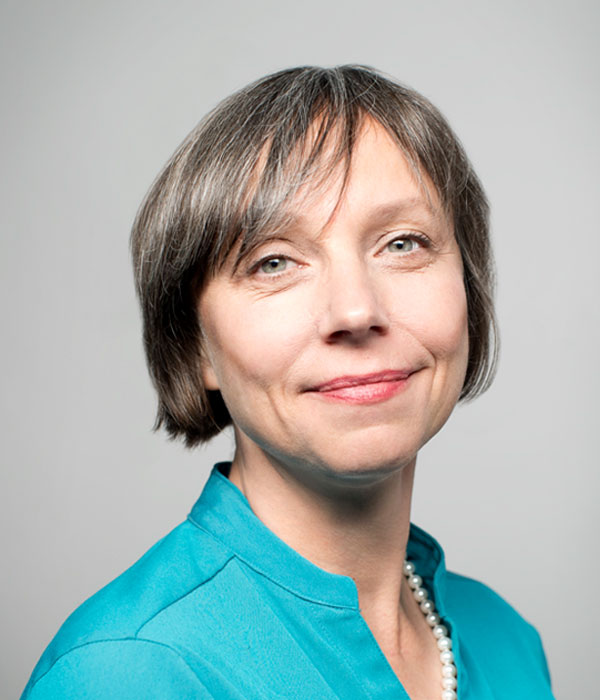
Liz Edwards
Director, Canadian Fine Art

Gregory Humeniuk
Senior Specialist
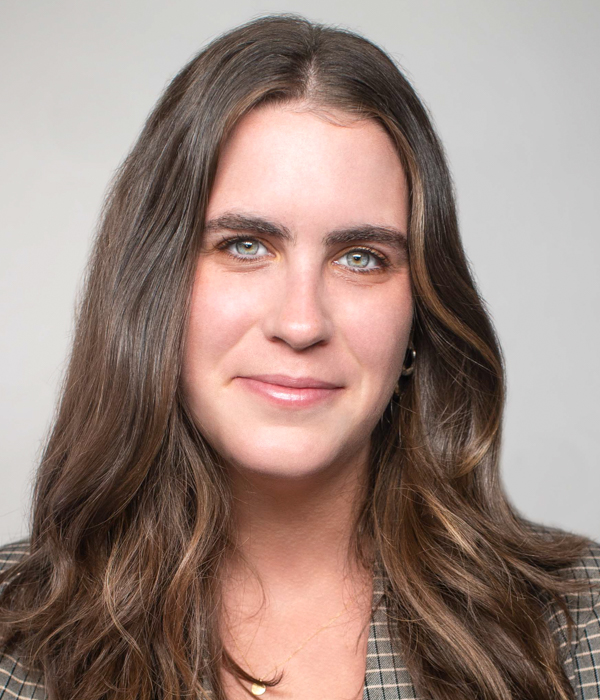
Kendra Popelas
Consignment Specialist



